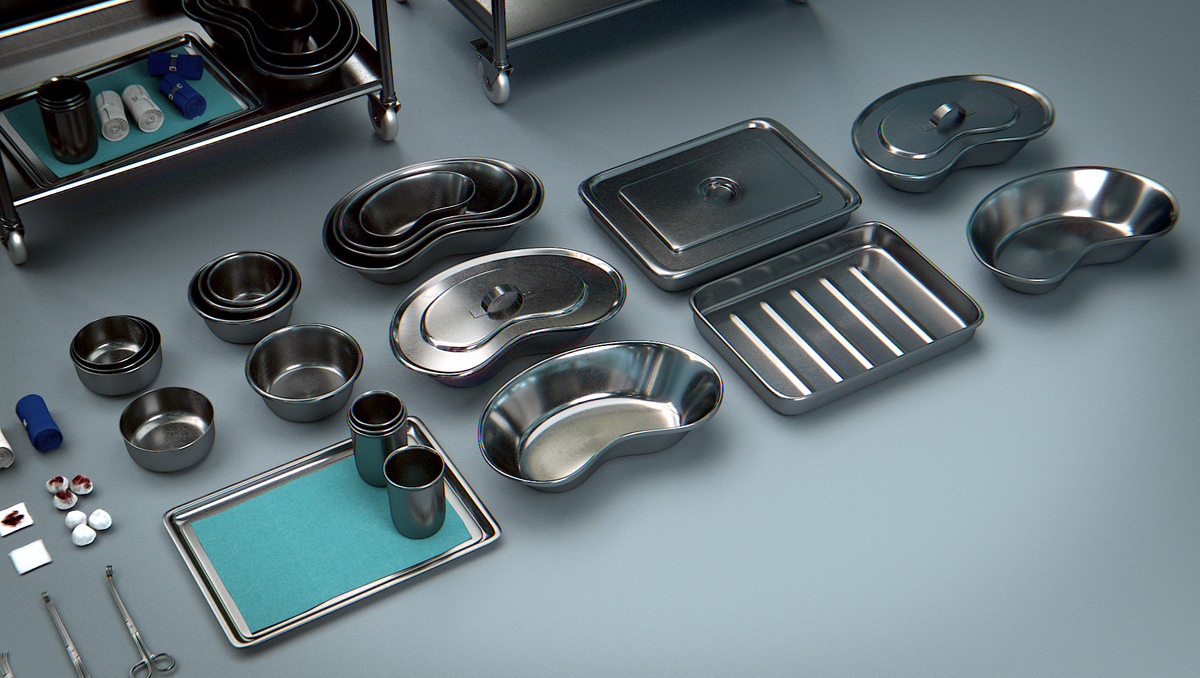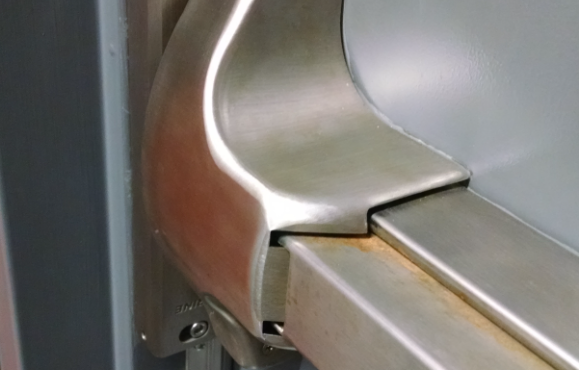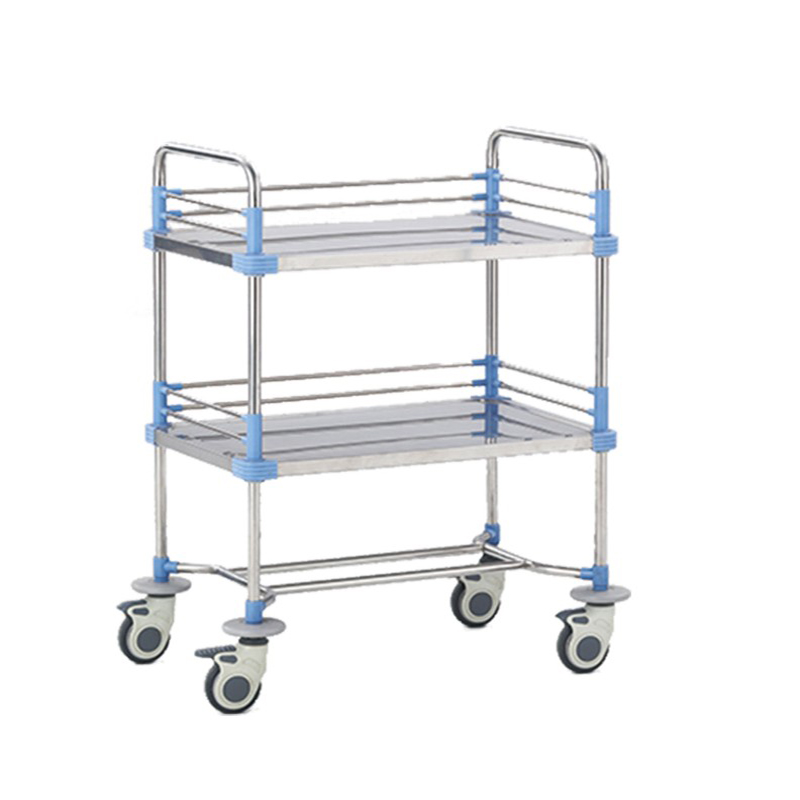What is the involvement of stainless steel in medical supplies?
As you can see, stainless steel can be seen everywhere in our lives. It is used in decoration, cooking, construction and so on. Recently, the "epidemic" has become a hot topic, and dedicated doctors and nurses have always been fighting on the front line, which deserves everyone's praise.
Today JM Steel takes you to them and learns how stainless steel is used in medical equipment in hospitals.

→Where does the stainless steel in the hospital appear?
The answer is so many, beyond your imagination.
Infusion stand, stethoscope, injection needle tube, tweezers, tweezers tube, iodophor cotton cylinder, screen frame, disinfection square plate, disinfection box, small medicine spoon, tongue depressor, etc. Has the stainless steel sneaked into the corner of the hospital?
In fact, stainless steel is also inseparable from places that we don’t often see every day, such as medical stents, bone drills, walking aids, instrument cabinets, adjustment cabinets, scalpels, surgical scissors, surgical forceps, surgical shadowless lamps, and hole-type shadowless lamps. , Deep irradiation shadowless lamp, cold light single hole lamp, medical treatment cart, operating bed, gynecological examination bed, nursing bed, washing tank, stainless steel test tube rack, medical equipment trolley, stretcher. These are often made of antibacterial stainless steel.

→So, what kind of stainless steel is suitable for them?
Stainless steel (sometimes referred to as stain-resistant steel) is the most commonly used metal alloy in the manufacture of surgical instruments. Austenitic 316 (AISI 316L) is a commonly used stainless steel called "surgical steel". This is because it is a tough metal that is very resistant to corrosion. It is also often used in the chemical industry. AISI 301 is the most commonly used metal for manufacturing medical springs. It can gain elasticity when cold worked, but loses corrosion resistance.
There are really stainless steel figures everywhere in the hospital. Why choose stainless steel to make medical devices?
Stainless steel can withstand high temperatures up to 400°C, which means it can be easily sterilized in an autoclave at 180°C. It also has the advantages of toughness and wear resistance almost comparable to that of carbon steel.
Nowadays, many medical devices are made of stainless steel because the chemical properties of stainless steel are relatively stable and the hardness conditions are also very good. It can be said that it is the material of choice for the manufacture of medical devices.
There are many types of stainless steel surgical instruments and the frequency of use is high. In order to maintain high hardness and good sharpness for a long time, medical surgical instruments usually use stainless steel as the material. However, stainless steel instruments can also rust if you are not careful.
→Stainless steel medical equipment can also be corroded, is it true?
The surfaces of medical stainless steel instruments that are often in contact with blood are prone to rust because blood contains hemoglobin, which is a compound of iron. In addition, there is sodium chloride in the blood, which will strongly corrode all stainless steel. Once these two substances come into contact with the device, they will immediately begin to corrode.

→How to prevent the corrosion of medical equipment?
Surgical instruments must be handled on-site after they are removed. The longer the time delay, the more serious the equipment will be corroded and rusted, and the higher the processing cost will be. If it is fresh blood, just treat it with cold water directly; if it is fresh blood that is coagulated on the surface, you can add some cleaning agent; but if it has become completely coagulated dry blood, you need to add enzymes; and if the blood is steam sterilized If it is, it must be treated with ultrasound, and the relative cost will naturally be higher.

![]()
The surfaces of medical stainless steel instruments that are often in contact with blood are prone to rust because blood contains hemoglobin, which is a compound of iron. In addition, there is sodium chloride in the blood, which will strongly corrode all stainless steel. Once these two substances come into contact with the device, they will immediately begin to corrode. Therefore, the surgical instruments must be handled on-site after they are removed. The longer the time delay, the more serious the equipment will be corroded and rusted, and the higher the processing cost will be. If it is fresh blood, just treat it with cold water directly; if it is fresh blood that is coagulated on the surface, you can add some cleaning agent; but if it has become completely coagulated dry blood, you need to add enzymes; and if the blood is steam sterilized If it is, it must be treated with ultrasound, and the relative cost will naturally be higher.

And stainless steel surgical instruments are key medical equipment. If the blood and human tissues are not cleaned, for example, after each use, a large amount of organic pollutants such as blood or tissue fluid may be contaminated, such as salts and iodine in these pollutants. Will corrode and destroy the effect of the chromium layer. The damage caused by the longer time will naturally increase, and the damage caused by the thousands of organic pollutants in the device will be greater, because these salts have no liquid barrier and directly contact the stainless steel, which expands the damage to the chromium layer. At the same time, because it will cause cleaning difficulties, it usually remains on the equipment and forms long-term corrosion. In addition, the subsequent high temperature and high pressure disinfection and sterilization process accelerates the corrosion effect.
Stainless steel has an indelible contribution to the development of medical treatment. After reading this knowledge, do you have any understanding of the application of stainless steel in medical treatment? If you have any questions, please consult our online customer service. The mentioned 316, 316L, and 301 are our best-selling products. Click on the product details to find "Stainless steel pipes and fittings near me".You are welcome to visit our product information for inquiries.